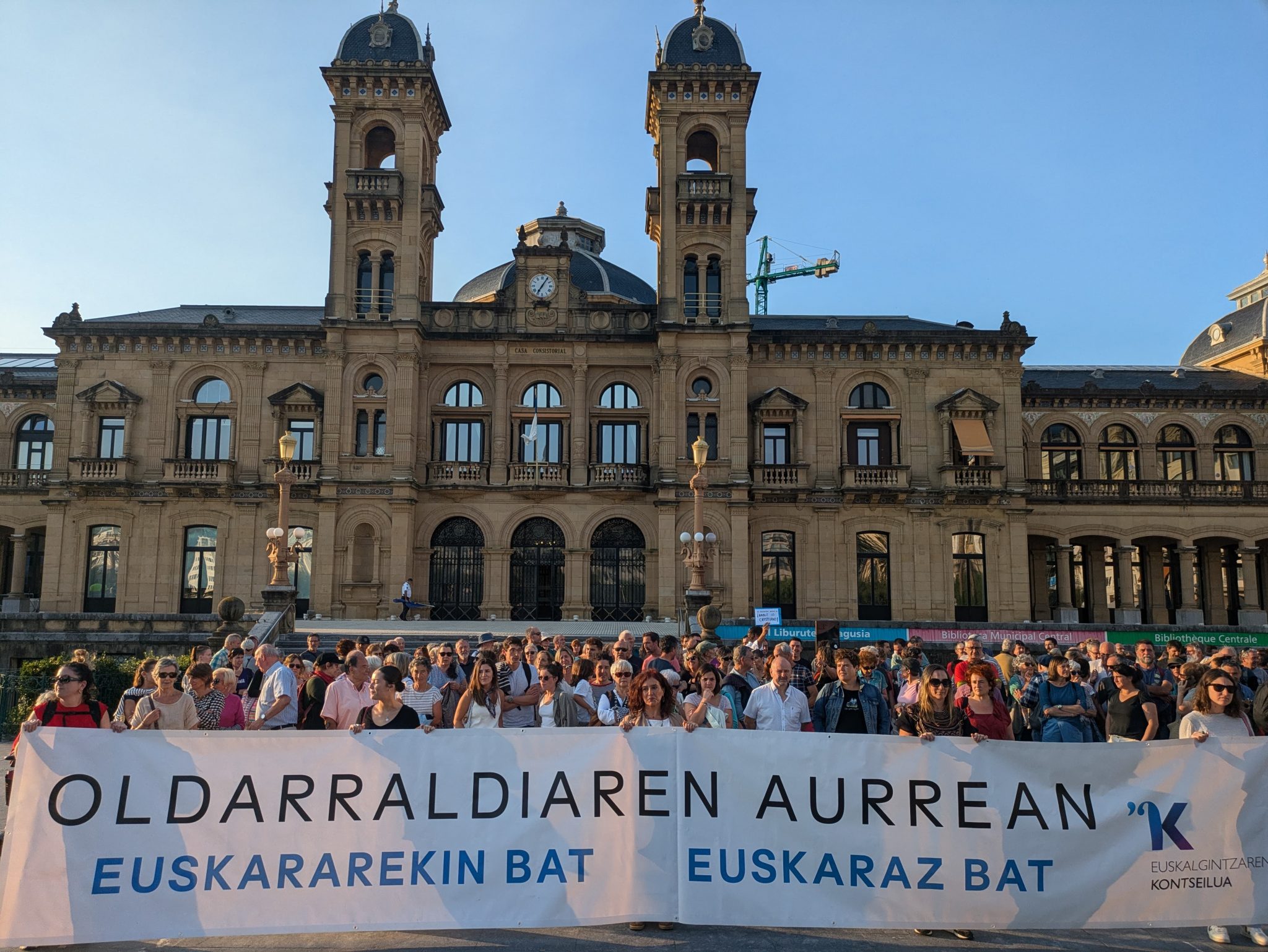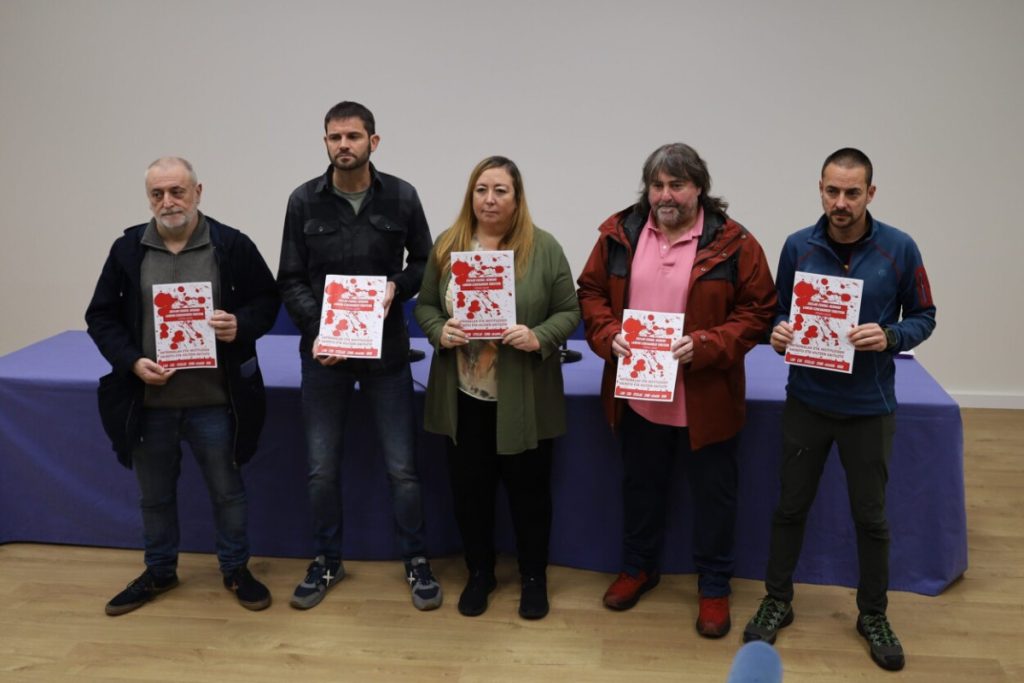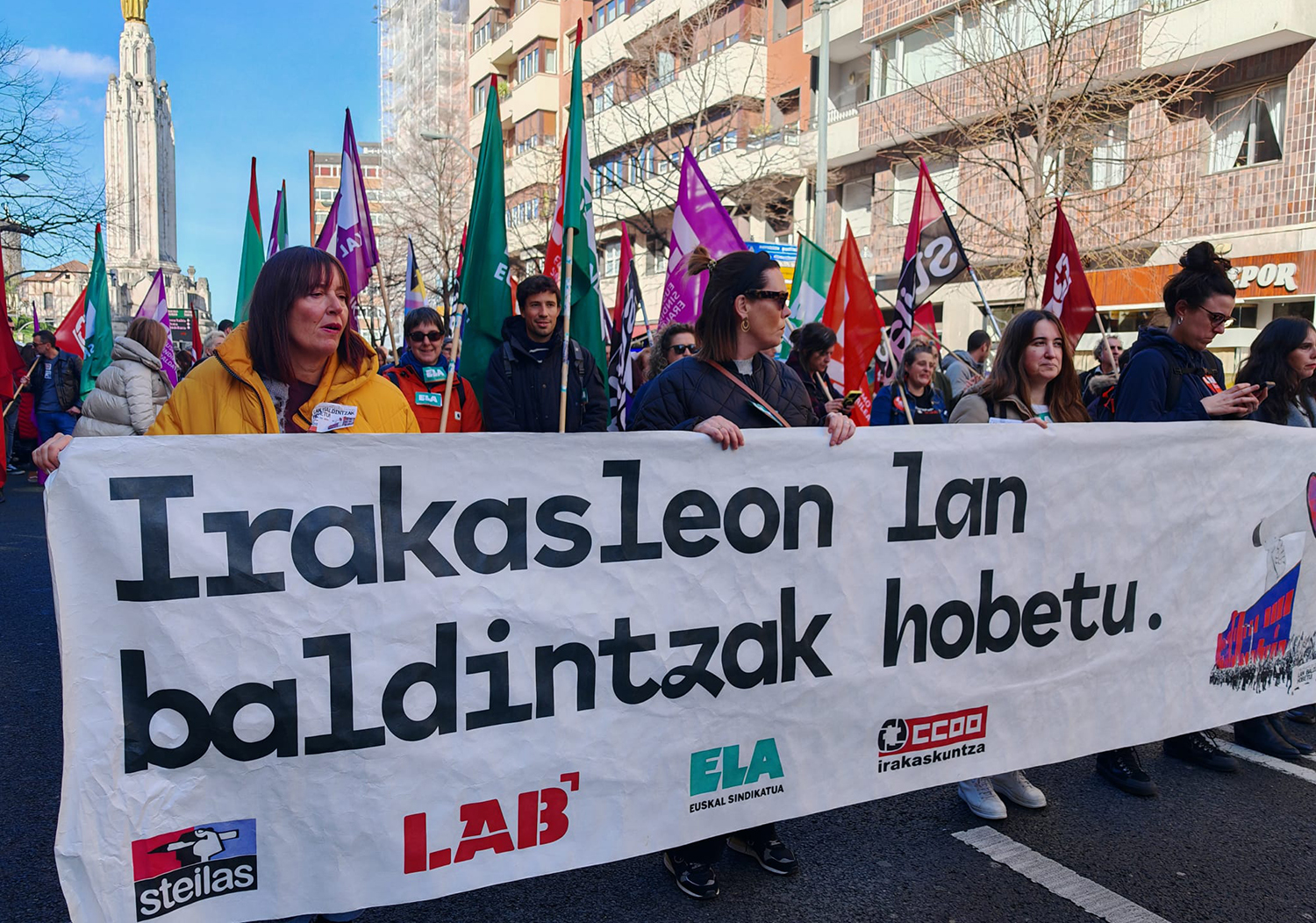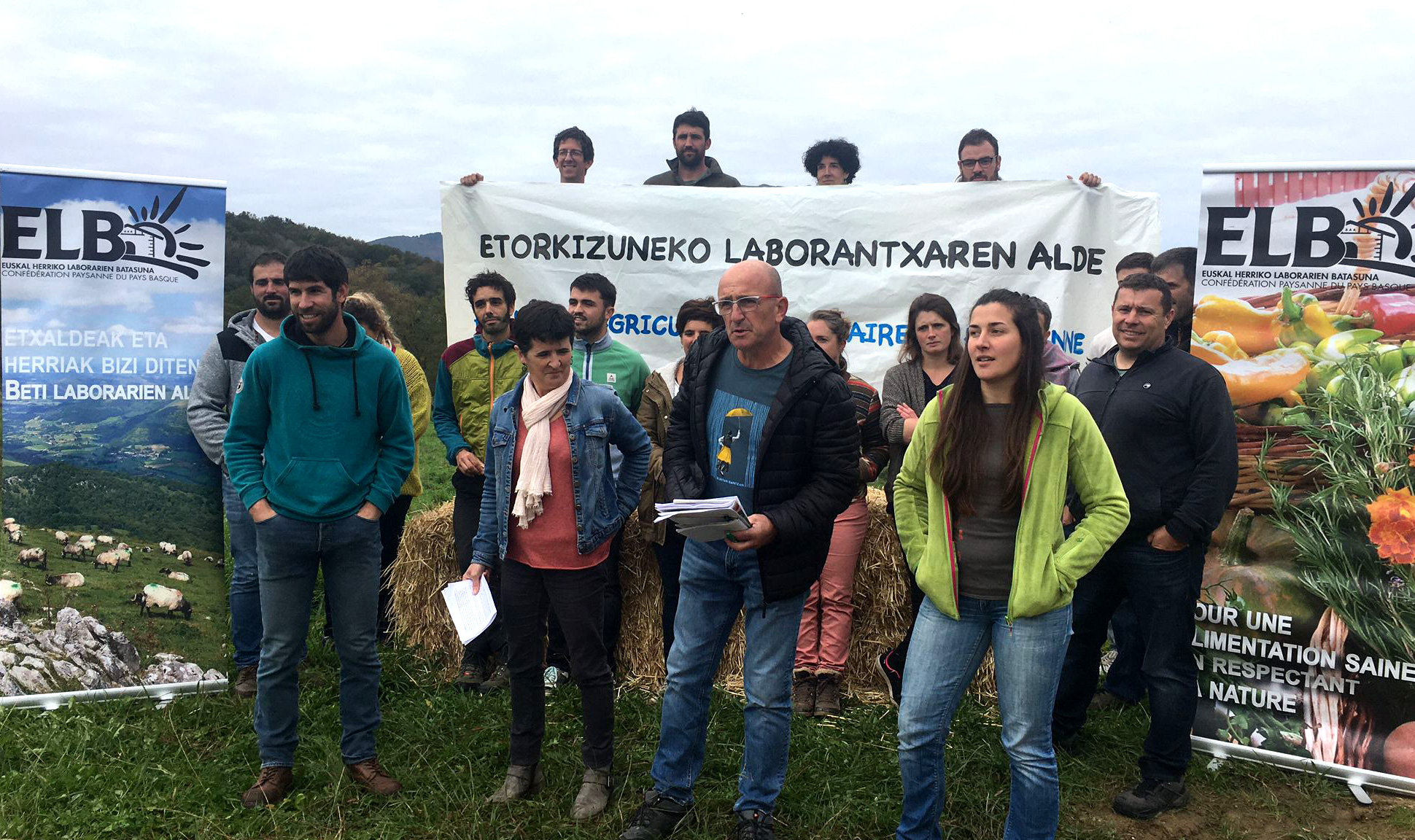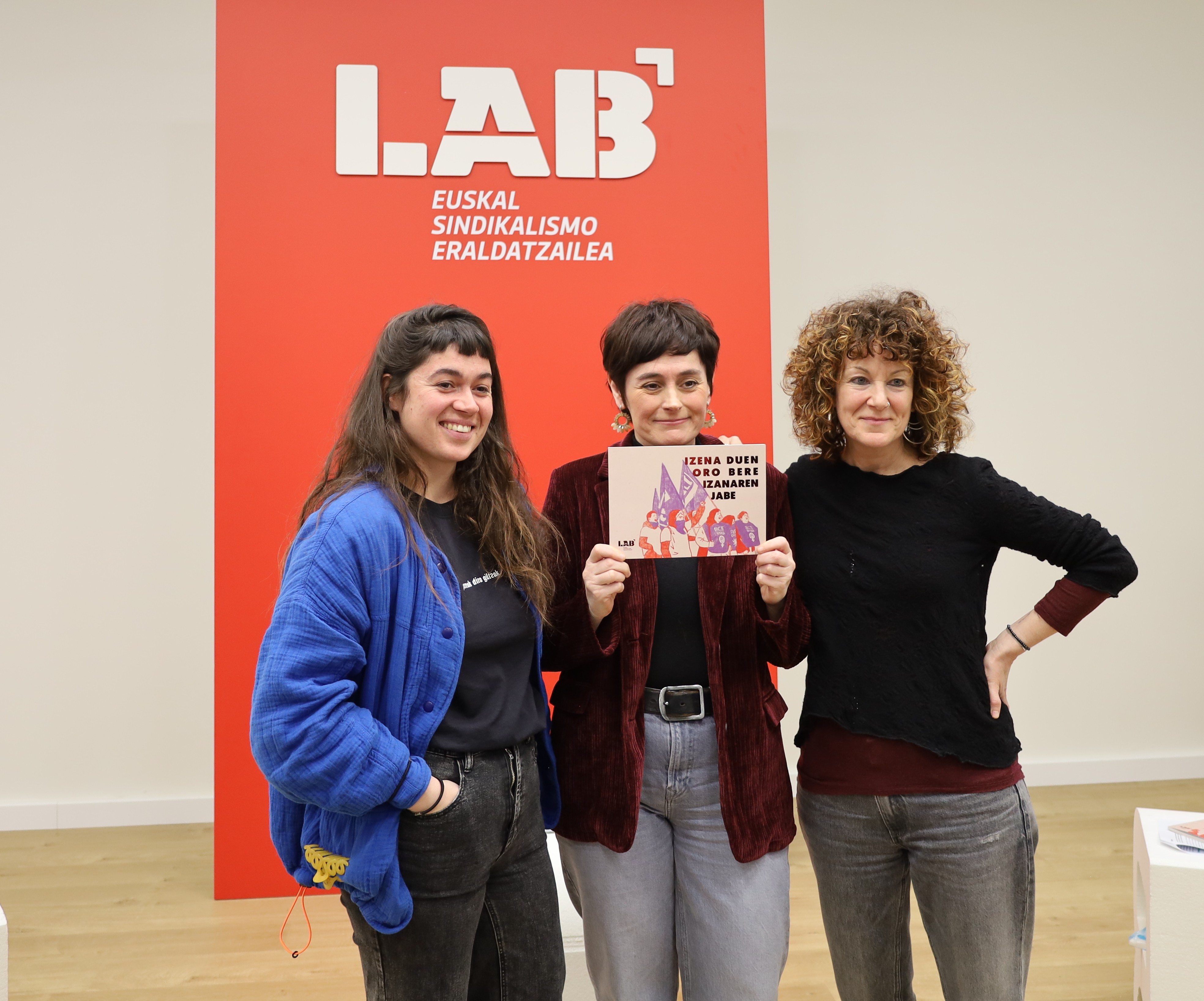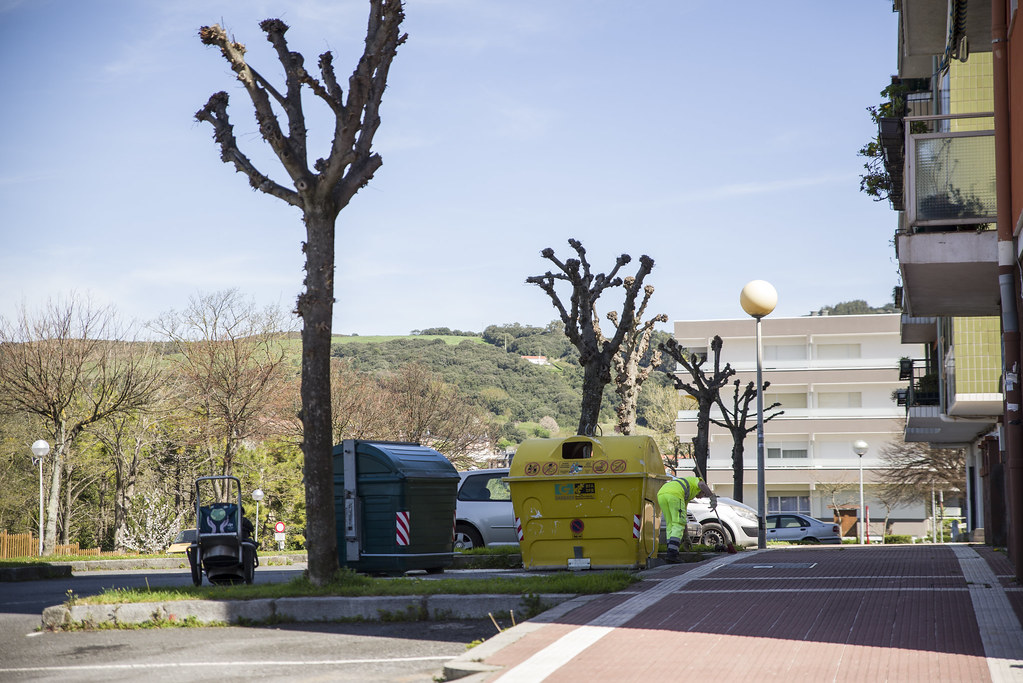A study reveals that the strike strengthens the Basque trade unions "in opposition"
- The study conducted by economists Jon Las Heras and Lluís Rodríguez concludes that the confrontation strategy of ELA and LAB has meant “the renewal of unions” and the empowerment of workers in the long term. The Basque Autonomous Community is the European territory where there have been more strikes in recent years.

“Without a strike, the unions do not renew themselves.” In other words, they become obsolete if this confrontation dynamic is not carried out. According to the professor of economics at the UPV/EHU Jon Las Heras and economists Lluís Rodríguez, this is the logic with which the Basque trade unions "in contrapoder" have acted in recent years in promoting collective bargaining. And in a study published in the British Journal of Industrial Relations, it is concluded that without this key one cannot understand the progress of these unions, nor that Euskal Herria is “the leader of the European strike league”.
Economists have researched the strikes of recent decades in Araba, Gipuzkoa and Bizkaia to explain the strategy and guidelines of the unions. They've also given some data, we've taken it from Berria to summarize: Between 1990 and 2017, there were an average of 366 strike days per 1,000 inhabitants. This figure is twice that of the Spanish State (188) and more than three times that of the French State (103). But the trend is the most significant. While in the rest of Europe there are fewer and fewer strikes, most major trade unions have opted for a concerted strategy, in Euskal Herria they have multiplied. Why? How do you understand it?
According to Las Heras and Rodríguez in Hego Euskal Herria, two very different groups of unions have been created, of different strategy. This has its origin in the relocation of ALS in 1990, mainly due to their reflections on the impact of labor conflicts in collective bargaining, as well as factors related to sovereignty and financing. Thus, a block of trade unions has been created in “counter-apoder”, in collaboration with ESK, Steilas and LAB, which has also significantly increased their membership, and with the social partners.
“This more syndicalist way of engaging in collective bargaining is manifested, among other things, in the ability to ‘shield’ collective agreements against significantly higher membership rates, good collective agreements or latest labour reforms”
CCOO and UGT, for their part, are closely linked to state aid and should fit into the “reformism” bloc, as Las Heras explained in Euskadi Irratia. Faced with this reality would be the counterpart unions: “They delegitimize the neoliberal process and in the end they are looking for an autonomous strategy to channel syndicalism.”
Putting labour disputes at the heart of the trade union renewal strategy has meant a substantial change in strike models. These strikes, according to the study, seek not only the mobilization of workers, but an empowerment and “deeper organization” to address with more cohesion the serious deregulation of the labour market. Rather than short-term interests, the “active” training of the workforce mobilizes workers and unions to strike.
“This more syndicalist way of committing to collective bargaining is expressed, among other things, in significantly higher membership rates, in the signing of good collective agreements or in the ability to ‘shield’ collective agreements against the latest labor reforms,” explained in the research conclusions.
The wrestler 'Spill over'
To this end, one of the fundamental tools of organization has been the resistance fund, formed by the contribution of the participants, to help the militants or workers who need it. According to Las Heras and Rodríguez in the Basque Country, there are more and more experiences demonstrating the effectiveness of this tool: “ELA has organised longer and longer strikes,” they say – such as the struggle of the workers in the residences of Bizkaia – and it has also been a spill over or “overcoming” effect that has led other unions to set up resistance boxes.
.jpg)
ELA created the resistance fund in 1978, LAB started the so-called Fighting Fund in 2010, while ESK has a Solidarity Fund since 2005. They have invested in own resources and in others, as forums for social dialogue that can delegitimize their discourse. This financial autonomy allows these unions greater freedom to implement a strategy of confrontation. Las Heras has highlighted in her Twitter account a fact: 32 times more than traditional/conservative unions are called on to strike.
Researchers end their work with several questions: "If the resistance box reinforces inter-union struggles, can there be a 'spill over combative' that encourages other unions to simulate the ELA counter-apoder model? Will it create closer links within the trade union blocs, especially in the counterpart bloc? Perhaps create common funds for the strike? ". One of the clear issues is that "if there are no major changes in these strategies, the subordination of the adopted paths will probably increase the gulf between the two ways of understanding syndicalism in Euskal Herria".
ELA sindikatuak azaldu duenez, azken Lan Eskaintza Publikoaren oinarrien arabera, Ertzaintzarako eskainitako lanpostuen %20ak eta Udaltzaingoaren %30ak ez daukate euskara-eskakizunik. Gasteizen, adibidez, udaltzain-lanpostuen erdietan, 24tan, ez dago euskara-eskakizunik.
Mahai Orokorreko sindikatuek salatu dute Gobernuak utzikeriaz jokatu duela ordezkaritza sindikalarekin negoziatzerakoan, horren adibidea da Estatutu berriaren negoziazioan ezarri duen blokeoa. Gobernua Mahai Orokorrean gai horiek guztiak negoziatzera esertzeko ahalegin ugari eta... [+]
Tamara Yague Confebaskeko presidenteak iragarri du gehiengo sindikalak deitutako martxoaren 20ko bilerara ez dela joango, eta gehitu du gutxieneko soldataz eztabaidatzeko markoa Espainiako Mahaia dela. ELA, LAB, ESK, Steilas, Etxalde eta Hiru sindikatuek EAErako gutxieneko... [+]
LABek, STEILASek, ELAk eta CCOOek greba egutegi bateratua aurkeztu dute Bilbon: martxoaren 25, 26 eta 27, eta apirilaren 1 eta 2. Egungo hitzarmenak aldarrikatutako edukietatik urrun kokatzen direla adierazi dute, "bai sukaldearen eta garbiketaren kolektiboan zein... [+]
Nahiz eta Nazio Batuen Erakundeak (NBE) 1977an nazioarteko egun bat bezala deklaratu zuen eta haren jatorriaren hipotesi ezberdinak diren, Martxoaren 8aren iturria berez emazte langileen mugimenduari lotua da.
Lan baldintzen "prekarietatea" salatzeko kontzentrazioa egin zuten asteartean egunkariaren egoitzaren aurrean. Abenduaren 2tik sindaura greban daude langileak eta mobizlizazioak "areagotzea" erabaki dute orain.
Mendizale batek asteburuan ikusi du animalia Lapurdiko Azkaine herrian, eta otsoa dela baieztatu du Pirinio Atlantikoetako Prefeturak. ELB lurraldean "harraparien presentziaren kontra" agertu da.
2024ko laneko ezbeharren txostena aurkeztu dute LAB • ESK • STEILAS • EHNE-etxalde eta HIRU sindikatuek aurtengo otsailean. Emaitza larriak bildu dituzte: geroz eta behargin gehiago hiltzen dira haien lanpostuetan.
Jakina da lan ikuskariak falta ditugula geurean. Hala ere, azken egunotan datu argigarriak ematea lortu dute: lan ikuskaritzaren arabera, EAEko enpresen %64ak ez du ordutegien kontrolean legedia betetzen. Era berean, lehendakariordeak gaitzetsi du, absentismoaren eta oinarrizko... [+]
Grebaren bezperan Hezkuntza Sailak “edukirik gabeko” mahaia deitu zuela eta sindikatu deitzaileak “errespetatu gabe” akordioa “antzezteko” gutxiengoa duten sindikatuak “erabili” nahi izan zituela salatu ostean, beste bi greba... [+]
The Department of Education doesn't understand why public employees have gone on strike. He's got to ask the LAB Syndicate. This union signed an agreement with the department in April 2023. Two years later they have also called for a strike because, unlike the previous ones, the... [+]








